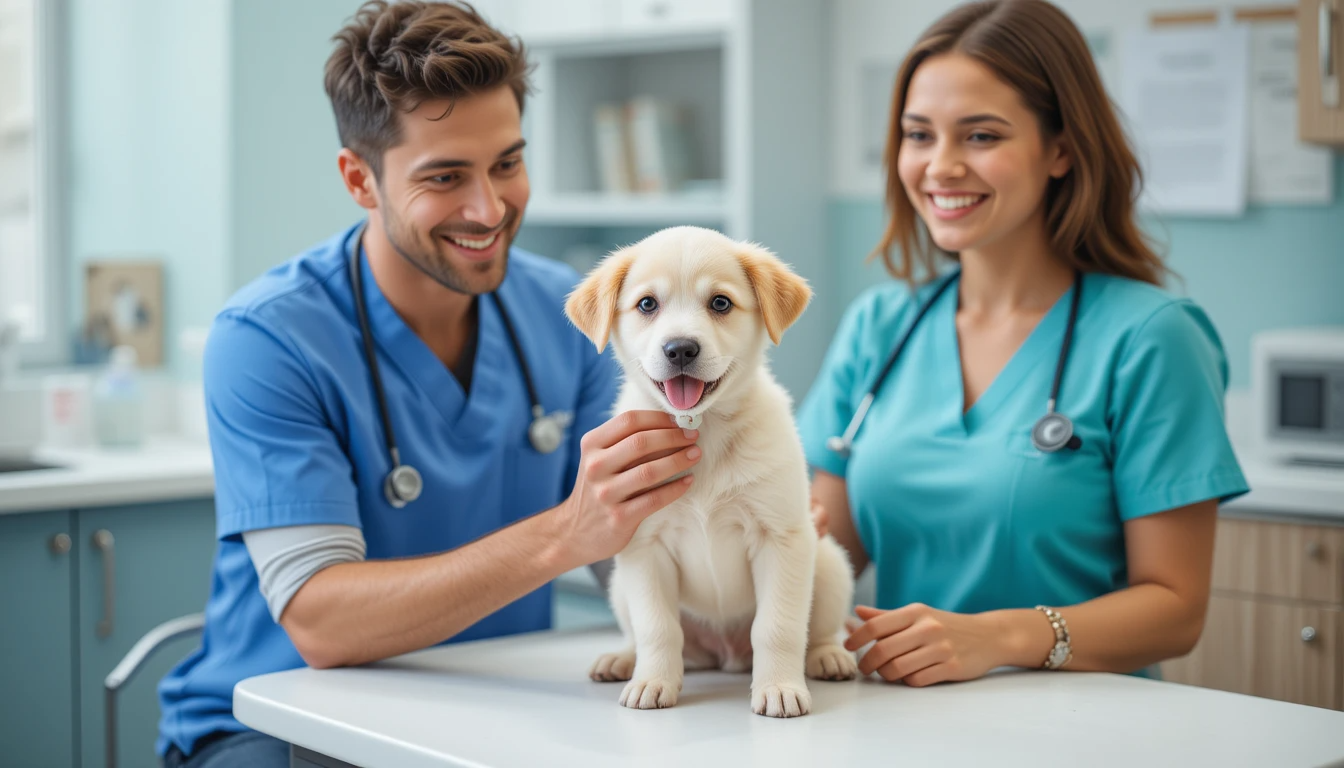What to Expect at Your Dog’s First Vet Visit: A Guide for Pet Parents
Bringing a new dog into your home is exciting—and their first visit to the vet is an important step in keeping them happy and healthy. Whether you’ve adopted a curious puppy or welcomed an older rescue, that first check-up sets the tone for their lifelong healthcare journey.
This visit isn’t just about vaccines or weighing your pup. It’s about building a bond—with your veterinarian and with your dog’s health. It’s where the groundwork begins to prevent illness, detect early warning signs, and make sure your dog is thriving.
Let’s walk you through how to prepare, what to expect, and how to ensure the experience is smooth—for both you and your pup.
How to Prepare for Your Dog’s First Vet Visit
Before the appointment, a little prep can go a long way. Here’s how to help your dog feel calm and ready for their big day:
- Avoid High-Traffic Dog Areas: Until your dog is fully vaccinated, it’s best to stay away from places like dog parks or groomers where diseases can easily spread.
- Practice Gentle Handling: Get your dog used to being touched—gently lift their ears, touch their paws, and check their mouth. This helps reduce anxiety when the vet does the same.
- Leash Up: Even if your dog is usually calm, a leash (or a secure carrier for smaller breeds) is a must. New places with strange smells and other animals can be overwhelming.
What to Bring:
- Previous Medical Records: Any vaccination cards, shelter paperwork, or prior test results will help your vet understand your dog’s health history.
- Tasty Treats or Kibble: Rewarding your dog during and after the visit helps create a positive association.
- Comfort Item (Optional): A favorite toy or blanket can help reduce stress in unfamiliar environments.
Arriving at the Vet
Plan to arrive a little early. This gives you time to complete paperwork, share your pet’s health records, and let your dog adjust to the new surroundings.
Keep your pup close by your side—some pets in the waiting room may be nervous or unwell. Offer calm reassurance and reward good behavior with a treat.
What Happens During the Physical Exam?
Once you’re in the exam room, the veterinarian will begin with a full head-to-tail check-up. This is your vet’s chance to look for any signs of health issues and create a wellness plan tailored to your dog.
Here’s what they’ll typically examine:
- Eyes and ears: Checking for redness, discharge, or signs of infection
- Teeth and gums: Looking for tartar, baby vs. adult teeth, and oral health
- Skin and coat: Checking for fleas, ticks, or unusual bumps
- Abdomen and joints: Feeling for any abnormalities like hernias or discomfort
- Genitals: Assessing for anatomical issues
Your vet will also record vital signs such as:
- Temperature
- Heart rate
- Breathing rate
They’ll also observe your dog’s movement and check for any joint or neurological concerns.
Lab Tests Your Vet Might Recommend
Based on the physical exam and your dog’s medical history, your vet might suggest a few lab tests:
- Heartworm and tick-borne disease tests
- Fecal testing for intestinal parasites
- Bloodwork if your dog is older or has concerning symptoms
These tests help identify hidden health issues early so your pup can get treatment before things get serious.
Vaccinations: Core and Lifestyle
Vaccines are a big part of your dog’s health routine. Here’s what you can expect:
Core Vaccines:
- DAAP (Distemper, Adenovirus, Parvovirus, Parainfluenza): Puppies need a series of shots starting at 6 weeks, every 2–4 weeks until 16 weeks old. Adult dogs may require 2 doses, followed by a yearly booster.
- Rabies: This is legally required in most places. Boosters are given every 1–3 years.
Lifestyle Vaccines:
These depend on your location and your dog’s lifestyle.
- Leptospirosis: Especially recommended in areas with wildlife or standing water.
- Bordetella (Kennel Cough): Required for boarding and grooming facilities.
- Lyme Disease: Important in tick-heavy regions.
Your vet will help determine which vaccines are best for your dog’s lifestyle and exposure risk.
Smart Questions to Ask Your Vet
The first visit is also your chance to learn more. Don’t hesitate to ask questions like:
- Is my dog’s vaccination schedule on track?
- Are there any common health concerns for my dog’s breed?
- What are the signs of those issues, and how can I prevent them?
- Do you notice anything I should be concerned about?
- Are there any gaps in their health care (e.g., parasite testing, bloodwork)?
This is the perfect time to learn how to be proactive about your dog’s health and well-being.
Final Thoughts: Creating a Positive Vet Experience
The first vet visit is more than just a check-up—it’s the start of a lifelong wellness journey. With the right preparation and a calm approach, it can be a low-stress, even enjoyable experience for your dog.
Be patient. Bring treats. Speak kindly. And remember—you’re building trust, not just with your vet, but with your dog, too.
Need help preparing for your dog’s next appointment? Talk to your vet about behavior tips, training tricks, and how to make vet visits feel safe and positive.




